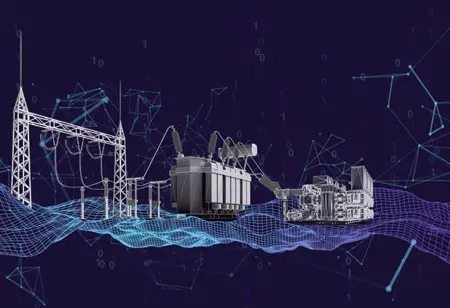Thank you for Subscribing to Electrical Business Review Weekly Brief
I agree We use cookies on this website to enhance your user experience. By clicking any link on this page you are giving your consent for us to set cookies. More info
Pioneering the Future: Electric Motors Enhanced with IoT and AI for Unprecedented Performance
A groundbreaking evolution is underway in electric motors as the convergence of Internet of Things (IoT) and Artificial Intelligence (AI) technologies reshape their capabilities.

By
Electrical Business Review | Tuesday, September 12, 2023
Stay ahead of the industry with exclusive feature stories on the top companies, expert insights and the latest news delivered straight to your inbox. Subscribe today.
Electric motors are undergoing a groundbreaking transformation as IoT and AI converge, revolutionizing their capabilities.
FREMONT, CA: A groundbreaking evolution is underway in electric motors as the convergence of Internet of Things (IoT) and Artificial Intelligence (AI) technologies reshape their capabilities. Integrating these cutting-edge technologies into electric motors opens up possibilities, ranging from predictive maintenance to real-time performance optimization, propelling industries towards a new era of efficiency and innovation.
Traditional electric motors have often operated in isolation, with their performance monitored and maintained reactively. However, this paradigm is rapidly changing. IoT sensors embedded within these motors provide a constant data stream, capturing information on variables like temperature, vibration, and energy consumption. This data is transmitted to cloud-based platforms where AI algorithms analyse it in real-time, offering insights into motor health and operational efficiency.
One of the most significant advantages of this integration is predictive maintenance. Through AI-powered analytics, anomalies, and potential issues can be detected early, allowing maintenance teams to address problems before they escalate into costly breakdowns. This enhances operational uptime, minimises maintenance expenses, and reduces unplanned downtime. As a result, industries ranging from manufacturing to energy production can optimise their processes and boost productivity.
Moreover, real-time performance optimization is now a reality. AI algorithms can dynamically adjust motor parameters based on real-time data, ensuring that motors operate at peak efficiency under varying conditions. This is particularly valuable for systems with fluctuating demands, as the engines can automatically adapt to the changes, reducing energy consumption and operational costs.
The data-driven insights provided by IoT-enabled smart motors are also revolutionising decision-making processes. By analysing historical data, industries can identify trends, fine-tune processes, and develop predictive models for future scenarios. This empowers businesses to make informed strategic choices that drive growth and enhance competitiveness.
However, challenges persist in the implementation of these technologies. Data security and privacy concerns must be carefully addressed, as the influx of sensitive operational data increases the risk of cyberattacks. Additionally, ensuring seamless compatibility between different systems and platforms is crucial for maximising the benefits of IoT and AI integration.
In conclusion, integrating IoT and AI technologies into electric motors marks a paradigm shift in how industries operate. The ability to predict maintenance needs, optimise real-time performance, and gain data-driven insights is revolutionising processes across various sectors. As the potential of these smart motors is unlocked, businesses are poised to achieve unparalleled levels of efficiency, cost savings, and innovation.








